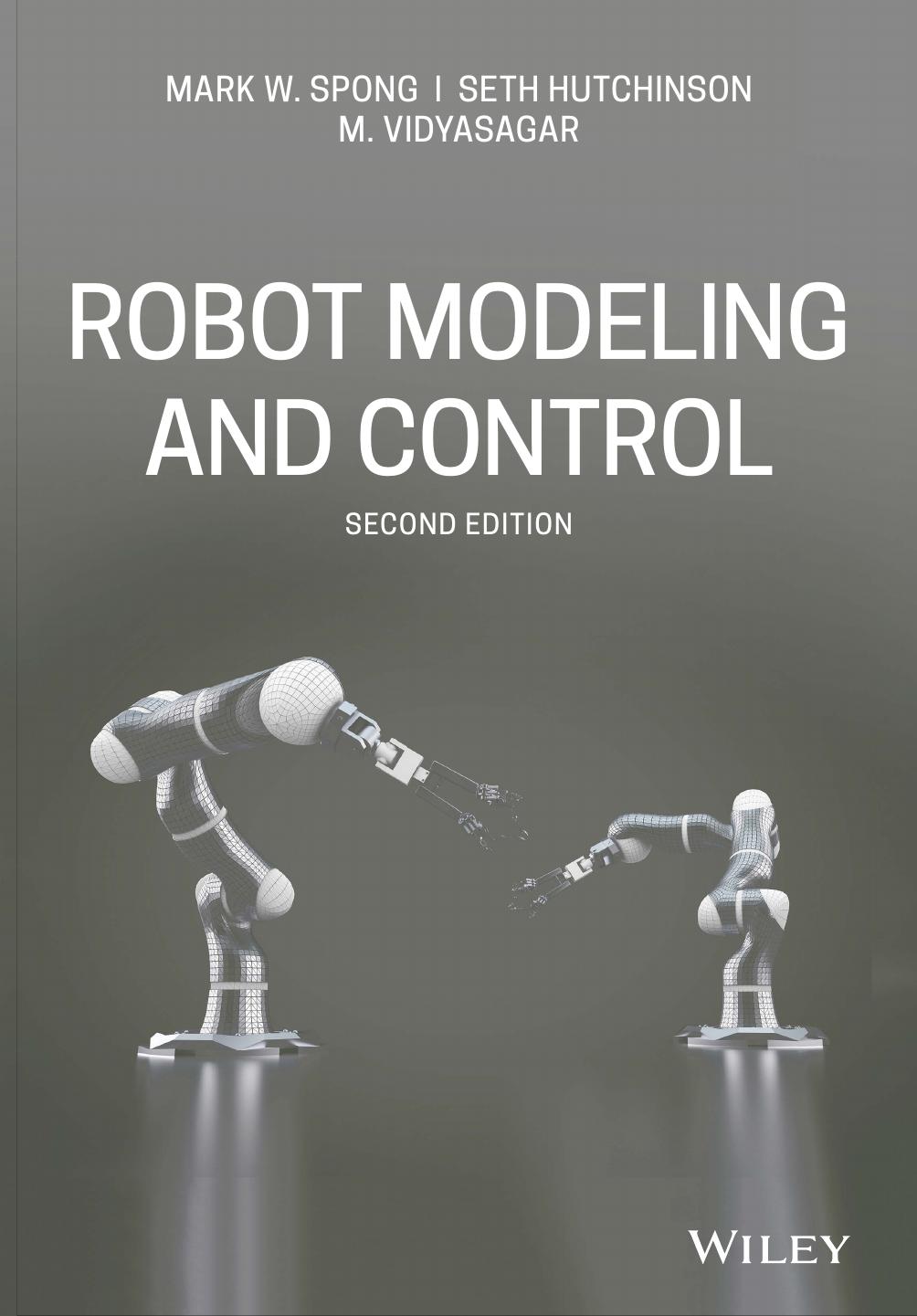Robot Modeling and Control 2nd Edition by Mark Spong, Seth Hutchinson, Vidyasagar ISBN 1119523990 9781119523994
$70.00 Original price was: $70.00.$35.00Current price is: $35.00.
Instant download Robot Modeling and Control 2nd Mark W. Spong Seth Hutchinson & M. Vidyasagar after payment
Robot Modeling and Control 2nd Edition by Mark W. Spong, Seth Hutchinson, M. Vidyasagar – Ebook PDF Instant Download/Delivery: 1119523990, 978-1119523994
Full dowload Robot Modeling and Control 2nd Edition after payment

Product details:
ISBN 10: 1119523990
ISBN 13: 978-1119523994
Author: Mark W. Spong, Seth Hutchinson, M. Vidyasagar
A New Edition Featuring Case Studies and Examples of the Fundamentals of Robot Kinematics, Dynamics, and Control
In the 2nd Edition of Robot Modeling and Control, students will cover the theoretical fundamentals and the latest technological advances in robot kinematics. With so much advancement in technology, from robotics to motion planning, society can implement more powerful and dynamic algorithms than ever before. This in-depth reference guide educates readers in four distinct parts; the first two serve as a guide to the fundamentals of robotics and motion control, while the last two dive more in-depth into control theory and nonlinear system analysis.
With the new edition, readers gain access to new case studies and thoroughly researched information covering topics such as:
● Motion-planning, collision avoidance, trajectory optimization, and control of robots
● Popular topics within the robotics industry and how they apply to various technologies
● An expanded set of examples, simulations, problems, and case studies
● Open-ended suggestions for students to apply the knowledge to real-life situations
A four-part reference essential for both undergraduate and graduate students, Robot Modeling and Control serves as a foundation for a solid education in robotics and motion planning.
Robot Modeling and Control 2nd Table of contents:
Chapter 1 Introduction
1.1 Mathematical Modeling of Robots
1.2 Robots as Mechanical Devices
1.3 Common Kinematic Arrangements
1.4 Outline of the Text
Part I The Geometry of Robots
Chapter 2 Rigid Motions
2.1 Representing Positions
2.2 Representing Rotations
2.3 Rotational Transformations
2.4 Composition of Rotations
2.5 Parameterizations of Rotations
2.6 Rigid Motions
2.7 Chapter Summary
Chapter 3 Forward Kinematics
3.1 Kinematic Chains
3.2 The Denavit–Hartenberg Convention
3.3 Examples
3.4 Chapter Summary
Chapter 4 Velocity Kinematics
4.1 Angular Velocity: The Fixed Axis Case
4.2 Skew-Symmetric Matrices
4.3 Angular Velocity: The General Case
4.4 Addition of Angular Velocities
4.5 Linear Velocity of a Point Attached to a Moving Frame
4.6 Derivation of the Jacobian
4.7 The Tool Velocity
4.8 The Analytical Jacobian
4.9 Singularities
4.10 Static Force/Torque Relationships
4.11 Inverse Velocity and Acceleration
4.12 Manipulability
4.13 Chapter Summary
Chapter 5 Inverse Kinematics
5.1 The General Inverse Kinematics Problem
5.2 Kinematic Decoupling
5.3 Inverse Position: A Geometric Approach
5.4 Inverse Orientation
5.5 Numerical Inverse Kinematics
5.6 Chapter Summary
Part II Dynamics and Motion Planning
Chapter 6 Dynamics
6.1 The Euler–Lagrange Equations
6.2 Kinetic and Potential Energy
6.3 Equations of Motion
6.4 Some Common Configurations
6.5 Properties of Robot Dynamic Equations
6.6 Newton–Euler Formulation
6.7 Chapter Summary
Chapter 7 Path and Trajectory Planning
7.1 The Configuration Space
7.2 Path Planning for
7.3 Artificial Potential Fields
7.4 Sampling-Based Methods
7.5 Trajectory Planning
7.6 Chapter Summary
Part III Control of Manipulators
Chapter 8 Independent Joint Control
8.1 Introduction
8.2 Actuator Dynamics
8.3 Load Dynamics
8.4 Independent Joint Model
8.5 PID Control
8.6 Feedforward Control
8.7 Drive-Train Dynamics
8.8 State Space Design
8.9 Chapter Summary
Chapter 9 Nonlinear and Multivariable Control
9.1 Introduction
9.2 PD Control Revisited
9.3 Inverse Dynamics
9.4 Passivity-Based Control
9.5 Torque Optimization
9.6 Chapter Summary
Chapter 10 Force Control
10.1 Coordinate Frames and Constraints
10.2 Network Models and Impedance
10.3 Task Space Dynamics and Control
10.4 Chapter Summary
Chapter 11 Vision-Based Control
11.1 Design Considerations
11.2 Computer Vision for Vision-Based Control
11.3 Camera Motion and the Interaction Matrix
11.4 The Interaction Matrix for Point Features
11.5 Image-Based Control Laws
11.6 End Effector and Camera Motions
11.7 Partitioned Approaches
11.8 Motion Perceptibility
11.9 Summary
Chapter 12 Feedback Linearization
12.1 Background
12.2 Feedback Linearization
12.3 Single-Input Systems
12.4 Multi-Input Systems
12.5 Chapter Summary
Part IV Control of Underactuated Systems
Chapter 13 Underactuated Robots
13.1 Introduction
13.2 Modeling
13.3 Examples of Underactuated Robots
13.4 Equilibria and Linear Controllability
13.5 Partial Feedback Linearization
13.6 Output Feedback Linearization
13.7 Passivity-Based Control
13.8 Chapter Summary
Chapter 14 Mobile Robots
14.1 Nonholonomic Constraints
14.2 Involutivity and Holonomy
14.3 Examples of Nonholonomic Systems
14.4 Dynamic Extension
14.5 Controllability of Driftless Systems
14.6 Motion Planning
14.7 Feedback Control of Driftless Systems
14.8 Chapter Summary
People also search for Robot Modeling and Control 2nd:
robot modeling and control 2nd edition pdf
dq robotics a library for robot modeling and control
textbook robot modeling and control
cooperative robot manipulators dynamical modeling and control an overview


